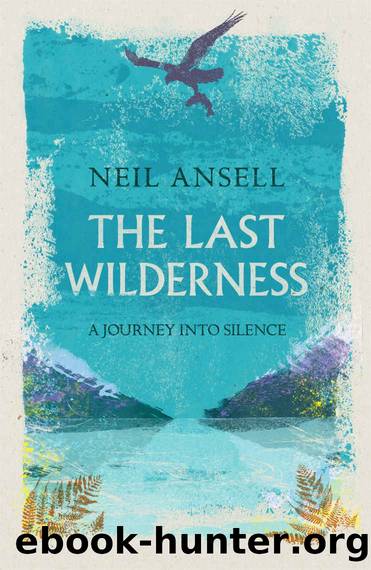The Last Wilderness_A Journey into Silence by Neil Ansell

Author:Neil Ansell [Ansell, Neil]
Language: eng
Format: epub
Publisher: Headline
Published: 2018-02-07T23:00:00+00:00
The Point and the Sound
The Rhu of Arisaig is a small, almost uninhabited west coast peninsula. To its north is a little sheltered bay, Loch nan Ceall, at the head of which is the village of Arisaig. In this harbour are moored perhaps twenty or thirty sailing boats, and people learn to kayak in its calm, shallow waters. A road extends from the village partway along the northern shore of the peninsula, and along this are scattered a bare handful of houses, but the southern shores of the Rhu, facing out to the much larger and wilder Sound of Arisaig, are completely depopulated.
I say depopulated, rather than uninhabited, advisedly. It is easy to look at a wild landscape and to assume that it was ever thus, that there is a steady progression over time from wilderness to civilisation, but this is not always the case, especially so in the Western Highlands. There was a time when many more people lived off this land than now. Two hundred years ago, there were perhaps fifty crofts on the Rhu, but when sheep-farming became the vogue among Scottish landowners, the landâs prior occupants were considered dispensable, and the clearances began. Many emigrated to the Americas, while those who remained were relocated in towns and villages away from the area. The whole of this peninsula became a single sheep farm.
While the Rough Bounds were always isolated from most of the mainland, the fact that there were virtually no roads did not mean there was no communication, for there were still sea-roads. Getting from place to place was almost always easier by water, and the areaâs links were more with the islands than the interior. There was a thriving community here once. It can be seen in the place names, the fact that almost every little hill and tiny lochan has a name, showing it was once of significance to someone.
And occupation of this land dates back further, much further. I was on a hillside on the south side of the peninsula, far from the nearest road or house, looking down at a Neolithic relic, which showed that while it might be uninhabited now, there were people here five thousand years ago. I had spotted it on my map â âcup-marked stoneâ, written in a Gothic script, and then I had read a little about it in the visitor centre in the village. It had been my intention to cross the peninsula and then head back along the coastline over the course of a couple of days, so it was just a matter of plotting the right line over the hills, in order not to miss it. The stone was sited on a steep grassy hillside facing south. There was a single tree nearby, and a single grazing sheep, watching me cautiously. A big smoothed slab of rock bulged from the long grass. Its entire surface was covered with dozens of small shallow discs that had been scraped into it, all different sizes, and in its centre a single large deep cup filled with rainwater.
Download
This site does not store any files on its server. We only index and link to content provided by other sites. Please contact the content providers to delete copyright contents if any and email us, we'll remove relevant links or contents immediately.
| General | Channel Islands |
| England | Northern Ireland |
| Scotland | Wales |
Spell It Out by David Crystal(36082)
Underground: A Human History of the Worlds Beneath Our Feet by Will Hunt(12050)
A Year in the Merde by Stephen Clarke(5366)
Venice by Jan Morris(2545)
Claridge's: The Cookbook by Nail Martyn & Erickson Meredith(2379)
My Paris Kitchen: Recipes and Stories by Lebovitz David(2269)
A TIME OF GIFTS by Patrick Leigh Fermor(2173)
The Plantagenets by Dan Jones(2058)
Welcome to the Goddamn Ice Cube by Blair Braverman(2015)
The Finnish Way by Katja Pantzar(1958)
Top 10 Prague (EYEWITNESS TOP 10 TRAVEL GUIDES) by DK(1955)
From Russia with Lunch by David Smiedt(1947)
Bang Poland: How To Make Love With Polish Girls In Poland by Roosh V(1944)
The Isle of Mull by Terry Marsh(1914)
A TIME TO KEEP SILENCE by Patrick Leigh Fermor(1880)
Rick Steves London 2018 by Rick Steves & Gene Openshaw(1838)
Insight Guides Experience Tokyo by Insight Guides(1832)
A Taste of Paris by David Downie(1830)
Merde in Europe by Stephen Clarke(1739)
